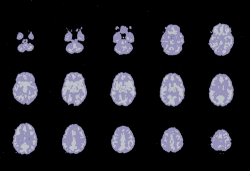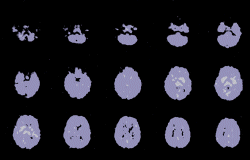
| |
|
|
|
Lortab combines a narcotic analgesic (painkiller) and cough reliever with a non-narcotic analgesic for the relief of moderate to moderately severe pain. Heroin can cause infection of heart lining and valves.
Alcohol is a DOWNER that reduces activity in the central nervous system. The alcohol intoxicated person exhibits loose muscle tone, loss of fine motor coordination, and often has a staggering "drunken" gait.
Morphine is a narcotic analgesic. Morphine was first isolated from opium in 1805 by a German pharmacist, Wilhelm Sert�rner.
|
 Print this article |  Send this article to a friend |  Add to Favorites |
Ecstasy
Side Effects ![]()
MDMA or ecstasy is a Schedule I synthetic, psychoactive drug possessing stimulant and hallucinogenic properties. Ecstasy possesses chemical variations of the stimulant amphetamine or methamphetamine and a hallucinogen, most often mescaline. Commonly referred to as Ecstasy or XTC, MDMA was first synthesized in 1912 by a German company possibly to be used as an appetite suppressant. Chemically, it is an analogue of MDA, a drug that was popular in the 1960s. Today Ecstasy is most often distributed at late-night parties called "raves", nightclubs, and rock concerts. As the rave and club scene expands to metropolitan and suburban areas across the country, ecstasy use and distribution are increasing as well.
The designer drug "Ecstasy," or MDMA, causes long-lasting damage to brain areas that are critical for thought and memory, according to new research findings in the June 15 issue of The Journal of Neuroscience. In an experiment with red squirrel monkeys, researchers at The Johns Hopkins University demonstrated that 4 days of exposure to the drug caused damage that persisted 6 to 7 years later. These findings help to validate previous research by the Hopkins team in humans, showing that people who had taken ecstasy scored lower on memory tests.
"The serotonin system, which is compromised by ecstasy, is fundamental to the brain's integration of information and emotion," says Dr. Alan I. Leshner, director of the National Institute on Drug Abuse (NIDA), National Institutes of Health, which funded the research. "At the very least, people who take ecstasy, even just a few times, are risking long-term, perhaps permanent, problems with learning and memory."
The researchers found that the nerve cells (neurons) damaged by ecstasy are those that use the chemical serotonin to communicate with other neurons. The Hopkins team had also previously conducted brain imaging research in human ecstasy users, in collaboration with the National Institute of Mental Health, which showed extensive damage to serotonin neurons.
MDMA (3,4-methylenedioxymethamphetamine) has a stimulant effect, causing similar euphoria and increased alertness as cocaine and amphetamine. It also causes mescaline-like psychedelic effects. First used in the 1980s, MDMA is often taken at large, all-night "rave" parties.
In this new study, the Hopkins researchers administered either MDMA or salt water to the monkeys twice a day for 4 days. After 2 weeks, the scientists examined the brains of half of the monkeys. Then, after 6 to 7 years, the brains of the remaining monkeys were examined, along with age-matched controls.
In the brains of the monkeys examined soon after the 2-week period, Dr. George Ricaurte and his colleagues found that MDMA caused more damage to serotonin neurons in some parts of the brain than in others. Areas particularly affected were the neocortex (the outer part of the brain where conscious thought occurs) and the hippocampus (which plays a key role in forming long-term memories).
This damage was also
apparent, although to a lesser extent, in the brains of monkeys who had
received MDMA during the same 2-week period but who had received no MDMA
for 6 to 7 years. In contrast, no damage was noticeable in the brains
of those who had received salt water.
"Some recovery of serotonin neurons was apparent in the brains of
the monkeys given MDMA 6 to 7 years previously," says Dr. Ricaurte,
"but this recovery occurred only in certain regions, and was not
always complete. Other brain regions showed no evidence of recovery whatsoever."
A NIDA-supported study has provided the first direct evidence that chronic use of MDMA, popularly known as "ecstasy," causes brain damage in people. Using advanced brain imaging techniques, the study found that MDMA harms neurons that release serotonin, a brain chemical thought to play an important role in regulating memory and other functions. In a related study, researchers found that heavy MDMA users have memory problems that persist for at least 2 weeks after they have stopped using the drug. Both studies suggest that the extent of damage is directly correlated with the amount of MDMA use.
"The message from these studies is that MDMA does change the brain and it looks like there are functional consequences to these changes," says Dr. Joseph Frascella of NIDA's Division of Treatment Research and Development. That message is particularly significant for young people who participate in large, all-night dance parties known as "raves," which are popular in many cities around the Nation. NIDA's epidemiologic studies indicate that MDMA (3,4-methylenedioxymethamphetamine) use has escalated in recent years among college students and young adults who attend these social gatherings.
 |
 |
These brain scans show the amount of serotonin activity over a 40-minute period in a non-MDMA user (left) and an MDMA user (right). Dark areas in the MDMA user's brain show damage due to chronic MDMA use.
In the brain imaging study, researchers used positron emission tomography (PET) to take brain scans of 14 MDMA users who had not used any psychoactive drug, including MDMA, for at least 3 weeks. Brain images also were taken of 15 people who had never used MDMA. Both groups were similar in age and level of education and had comparable numbers of men and women.
In people who had used MDMA, the PET images showed significant reductions in the number of serotonin transporters, the sites on neuron surfaces that reabsorb serotonin from the space between cells after it has completed its work. The lasting reduction of serotonin transporters occurred throughout the brain, and people who had used MDMA more often lost more serotonin transporters than those who had used the drug less.
Previous PET studies with baboons also produced images indicating MDMA had induced long-term reductions in the number of serotonin transporters. Examinations of brain tissue from the animals provided further confirmation that the decrease in serotonin transporters seen in the PET images corresponded to actual loss of serotonin nerve endings containing transporters in the baboons' brains. "Based on what we found with our animal studies, we maintain that the changes revealed by PET imaging are probably related to damage of serotonin nerve endings in humans who had used MDMA," says Dr. George Ricaurte of The Johns Hopkins Medical Institutions in Baltimore. Dr. Ricaurte is the principal investigator for both studies, which are part of a clinical research project that is assessing the long-term effects of MDMA.
"The real question in all imaging studies is what these changes mean when it comes to functional consequences," says NIDA's Dr. Frascella. To help answer that question, a team of researchers, which included scientists from Johns Hopkins and the National Institute of Mental Health who had worked on the imaging study, attempted to assess the effects of chronic MDMA use on memory. In this study, researchers administered several standardized memory tests to 24 MDMA users who had not used the drug for at least 2 weeks and 24 people who had never used the drug. Both groups were matched for age, gender, education, and vocabulary scores.
The study found that, compared to the nonusers, heavy MDMA users had significant impairments in visual and verbal memory. As had been found in the brain imaging study, MDMA's harmful effects were dose-related the more MDMA people used, the greater difficulty they had in recalling what they had seen and heard during testing.
The memory impairments found in MDMA users are among the first functional consequences of MDMA-induced damage of serotonin neurons to emerge. Recent studies conducted in the United Kingdom also have reported memory problems in MDMA users assessed within a few days of their last drug use. "Our study extends the MDMA-induced memory impairment to at least 2 weeks since last drug use and thus shows that MDMA's effects on memory cannot be attributed to withdrawal or residual drug effects," says Dr. Karen Bolla of Johns Hopkins, who helped conduct the study.
The Johns Hopkins/NIMH researchers also were able to link poorer memory performance by MDMA users to loss of brain serotonin function by measuring the levels of a serotonin metabolite in study participants' spinal fluid. These measurements showed that MDMA users had lower levels of the metabolite than people who had not used the drug; that the more MDMA they reported using, the lower the level of the metabolite; and that the people with the lowest levels of the metabolite had the poorest memory performance. Taken together, these findings support the conclusion that MDMA-induced brain serotonin neurotoxicity may account for the persistent memory impairment found in MDMA users, Dr. Bolla says.
Research on the functional consequences of MDMA-induced damage of serotonin-producing neurons in humans is at an early stage, and the scientists who conducted the studies cannot say definitively that the harm to brain serotonin neurons shown in the imaging study accounts for the memory impairments found among chronic users of the drug. However, "that's the concern, and it's certainly the most obvious basis for the memory problems that some MDMA users have developed," Dr. Ricaurte says.
Findings from another Johns Hopkins/NIMH study now suggest that MDMA use may lead to impairments in other cognitive functions besides memory, such as the ability to reason verbally or sustain attention. Researchers are continuing to examine the effects of chronic MDMA use on memory and other functions in which serotonin has been implicated, such as mood, impulse control, and sleep cycles. How long MDMA-induced brain damage persists and the long-term consequences of that damage are other questions researchers are trying to answer. Animal studies, which first documented the neurotoxic effects of the drug, suggest that the loss of serotonin neurons in humans may last for many years and possibly be permanent. "We now know that brain damage is still present in monkeys 7 years after discontinuing the drug," Dr. Ricaurte says. "We don't know just yet if we're dealing with such a long-lasting effect in people."
|
|
|
Show
your support. Link to us!

|
|
| Copyright © 2008 Drug Side Effects .com |
 Club drug safety needed
Club drug safety needed